Natural Dressage
A True Definition
Natural dressage is real dressage: the gymnastic training of horse and rider without artifice or force. It is founded on relaxation instead of tension, and true athletic development instead of circus trickery.
What Defines Natural Dressage?
This is a
term which has taken on connotations of natural horsemanship
techniques applied to dressage. Understandably, this has considerable
appeal to those who are put off by the constraints and rigidity of
traditional dressage riding, as the term natural dressage implies
greater liberty and respect of the horse. What is it that really makes
dressage ‘natural’, though, and not just another way of dominating the
horse?
Our
philosophy of natural dressage is training that is based on relaxation
not tension. This seems a simple statement to make, but it actually has
wide-ranging implications on the way we train, ride and keep horses.
Understanding When Training Is Based On Tension
In fact, most horse training, whether referred to as natural dressage, classical, competitive or otherwise, is inherently founded on tension, because it uses the horse’s anticipation of signals to bring about certain responses. For the horse to anticipate signals and act on them, a certain level of both physical and mental tension is required. Depending on the training method, this anticipation can be generated in different ways, for example traditional dressage uses the horse’s anticipation of uncomfortable pressure by means of the whip, spur, and bit.
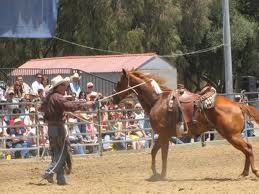
Natural horsemanship training is usually based on initiating the horse’s flight response, creating the anticipation of this with whirling ropes, bags on sticks, aggressive body-language and so on. Although these ‘natural’ training methods may appear to involve less constraints (horses are often worked loose in round pens, ridden with loose reins, bitless or sometimes with no bridle at all) the constraint of the perpetual anticipation of signals is ever-present, and in a way this constrain is more insidious. For an in-depth discussion of this go to Dressage and Natural Horsemanship - What's the Difference?
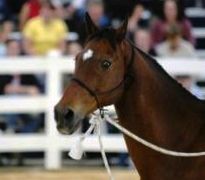
The means of creating a state of anticipation in the horse may be different in different forms of dressage and training, but the tension is the same.
Training without tension draws on different resources to bring about a physical and mental state in the horse which is conducive to gymnastic development. These resources are not limited to the training environment, but involve the horse’s whole lifestyle.
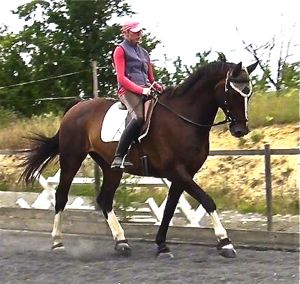
The
goal of true natural dressage is not generating certain responses to
certain signals in order to make the horse perform particular movements
on command, but instead to make a physical transformation in the horse
that changes its whole way of carrying the rider. It
is the creation of a state of physical balance and mental harmony which
liberates both horse and rider from the normal limitations of their
body. The responses of the horse are generated through
this physical connection, so that tension and anticipation is no longer
required to bridge the gap between horse and rider, as the two become
one in mind and body.
Relaxation: The Starting Block Of Natural Dressage
The
creation of this profound connection between horse and rider depends on
a foundation of trust and relaxation in the horse before we even begin
the most basic training. This is because dressage engages and develops
the postural muscles above the locomotive ones. More specifically,
engagement on the ring (when the horse comes 'on the bit’)
is a physiological transformation which demands that the diaphragm be
relaxed. Just like us, horses store emotional tension in their
diaphragm, which translates any such anxiety in the horse - even though
it may not be apparent - into a direct barrier to engagement.
Requirements for Relaxation:
The
basic nature of horses, despite our domestication of them, dictates
that they must have both adequate social interaction and freedom to move
for a basic level of happiness and well-being. A horse who is kept in a
stable for most of the time may seem to accept it because of
habituation, but the anxiety that this causes is merely stored on a
deeper level.
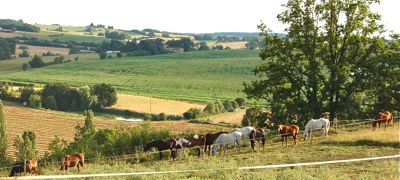
Horses also need a certain stability in their environment, and allowing them to develop steady and long-standing relationships with other horses is an important part of this.
Another essential part of this stability is
that a horse should always have the possibility of finding food and
water when they are needed. This may seem like an obvious concern, but
it is easy to forget that stabled horses are utterly dependent on us for
these most basic requirements, and this in itself may be a
source of constant low-level anxiety. Many stabled horses, with nothing else to
occupy them, finish their feed and hay quickly and then must wait many
long hours before being provided with more. Unhealthy gut function due
to inconsistent provision of forage also has physical repercussions such
as gastric ulceration, causing pain which only adds to existing stress.
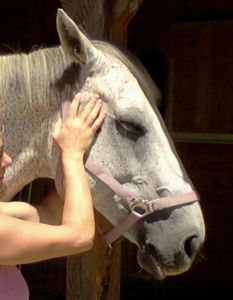
Being
uncomfortable in their bodies is a common cause of tension in the
horse, and thus a barrier to natural dressage. Physical discomfort of
course has innumerable possible causes in the horse, but some of the
most common and insidious are unhealthy feet (see The Importance of Natural Hoof Care) and musculo-skeletal pain (see Equine Back Problems).
Working the horse in engagement invariably reveals layers of physical problems, even those that have been deeply buried, and in order to progress we must find ways of addressing these problems at their source instead of just treating the symptoms. See: Horse Healing Philosophy.
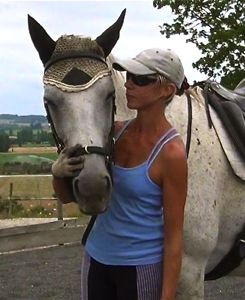
In the training situation, the basic relaxation of the horse is greatly dependent on a trusting relationship with the trainer. Our experience of training horses from many different backgrounds has shown us that as humans we can never take the horse’s trust for granted, even when there would seem to be absolutely no reason for it to be lacking (see Horse Trauma And How To Heal It). With this in mind we must conduct our training in a way that is continually reinforcing trust, and addressing tension instead of overriding it.
For a practical guide on how to train a horse in this way see How To Train A Horse Without Force.
What Makes True Natural Dressage Different
The lack of tension of this way of training allows for a truly profound connection to be achieved between horse and rider.
On a physical level, this connection is about the rider forming his/her body in such a way as to be able to fundamentally modify the horse’s way of going into a balanced, channeled and powerful flow of movement. Because the rider does this via their posture, seat and leg aiding, there is no need for artificial devices, strong bits or spurs, and the results are always ultimately beneficial for the horse and rider’s body. One of the most significant physical results of true natural dressage is the suppleness that is developed throughout the horse's whole body, in every single joint. This suppleness is far from the bizarre, jerky way of moving often associated with dressage, 'natural' or otherwise.
On
a conscious or spiritual level, this way of riding leaves the horse’s
mind to be free and unhindered, always bringing the consciousness of
both horse and rider into the present moment. For this reason more than
any other, this kind of training is truly justified in calling itself
Natural Dressage. It is about bringing the consciousness of two beings
towards their true nature, where all things become one.
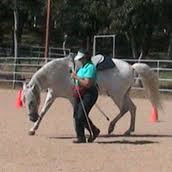
Other forms of
dressage which adopt this term because of the apparent liberty they
involve in terms of equipment, are in fact very often going against the
horse’s nature. They are conditioning his mind to a time-based, more
human way of thinking, always waiting for the next command instead of
just being in the moment and enjoying the wonderful physical sensations
brought about by engagement. The tension that this conditioning produces often shows in the horse's expression - ears flat back, anxious eye and pinched muzzle (photo left).
For
the rider, in terms of the evolution of his/her own consciousness, the
difference in these forms of training comes down to a simple choice:
what is more important - external results or inner quality? If your
focus is on the results - tricks, moves or whatever you choose to call
them - then you will find many ways of achieving them, whether working
in liberty or otherwise, and your experience will remain on that level.
If you choose to put your focus on the inner, prioritising the true feelings of balanced movement in all of its facets and expressions, then a whole other dimension of riding will be revealed.
External
results appeal to the ego, because they are essentially about proving
to both ourselves and others that we have achieved something. Inner
development challenges the ego and develops our true character by
building intuition and awareness, faith, humbleness and perseverance.
The rewards this brings may never involve the same recognition as the
external results-based path, but the inner rewards make up for it many
times over.
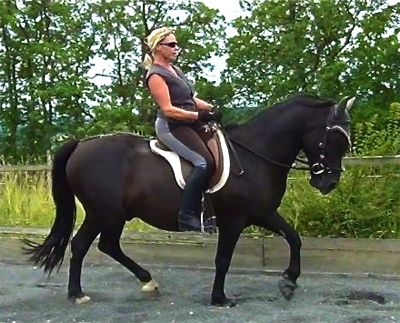
The pages on HHT are so wide-ranging and interrelated that we strongly recommend you look at the site plan to find other subjects that may interest you.
Dressage and Natural Horsemanship - What's The Difference?
What Does 'On The Bit' Really Mean?
How To Train A Horse Without Force
Rider Communication: Relating To Your Horse With Integrity
Horse Behavior: What It Means To Be A Prey Animal
Horse Trauma And How To Heal It
Return from Natural Dressage to Happy Horse Training homepage
New from HHT!
AudioRide is a series of exercises designed to listen to while you ride.
Audio descriptions guide you through each step of developing a balanced, dynamic connection with the horse through your position.
This truly innovative learning tool gives you a whole new way of being guided in your riding, in a calm, clear, step-by-step way.
Free Download! Introductory Exercise: Riding in the Now
The Gymnastic Rider eBook
Now available exclusively from HHT!
A unique, comprehensive guide to practical rider biomechanics. This professionally produced eBook takes the rider through the process of developing their body in the specific way that brings the horse's movement into harmony and balance, without force and constraint. Click here for full details, and to download the 15-page introduction to the book for free.
Join the Happy Horse Training group on Facebook!
See and share topical info, news and photo's, and take part in lively discussions.
Click here to go to the HHT group (make sure you log into fb first) and then click on the 'join' button at the top of the page.
Join the Whole Horse Newsletter!
HHT's free monthly newsletter giving you wide-ranging and intelligent insights into holistic horsemanship.
Just enter your details below to join.
Free bonus on the riding position with all new subscriptions: Ten Top Tips To Instantly Improve Your Connection With Your Horse.
Click here to see back issues of The Whole Horse newsletter
Train Your Horse
The Holistic Way
How To Train A Horse Without Force
is a unique guide to training horses through energetic connection and
gymnastic training. Part 1 covers everything on the ground, from
handling to the lungeing technique that develops strength, straightness
and engagement. Comes with a free eBook supplement on Horse Trauma.
Click here for more details.
"As a student of Zen Buddhism for nearly three decades, I've often wondered when someone was going to write the book on Zen and the art of horsemanship, and I think that your emphasis on mindfulness and energy connection gets right at the heart of the matter."
- Prof. Teresa Lloyd, U.S.
Do You Have
A Horse Story
To Share On HHT?
So many people have been through
wonderful experiences with horses, whether in training or otherwise. If
you've made a change in a horse's life - or one has made a change in
yours - tell us about it here.
Learn The Natural Barefoot Trim - The Simple Way
The Simple Seven-Step Natural Trim is a comprehensive step-by-step guide to a cutting-edge barefoot trim. Click here to find out more.
What people say about HHT:
"The riding instruction is outstanding, if instructors in the UK taught this way there would be a lot of happy riders and horses."
"The riding tuition exceeded my hopes and expectations by a long way; giving me an exciting new facet to horsemanship which is lighter. more subtle, more elegant and more meaningful. It is as if a new door has opened bringing more sunlight and air."
"My goodness - what a change has taken place in my riding. I think that I'm starting to sit 'into' the horse rather than on top of him. I felt my horse's movements in a way that has almost never happened before"
Click on Testimonials for more
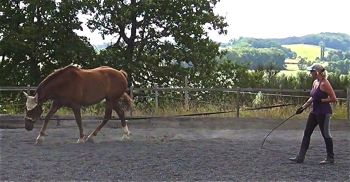





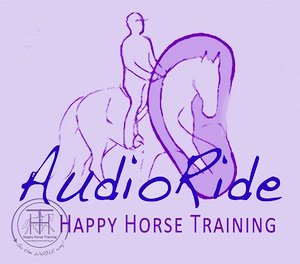




New! Comments
Anything to say about this page? Leave your comment in the box below.